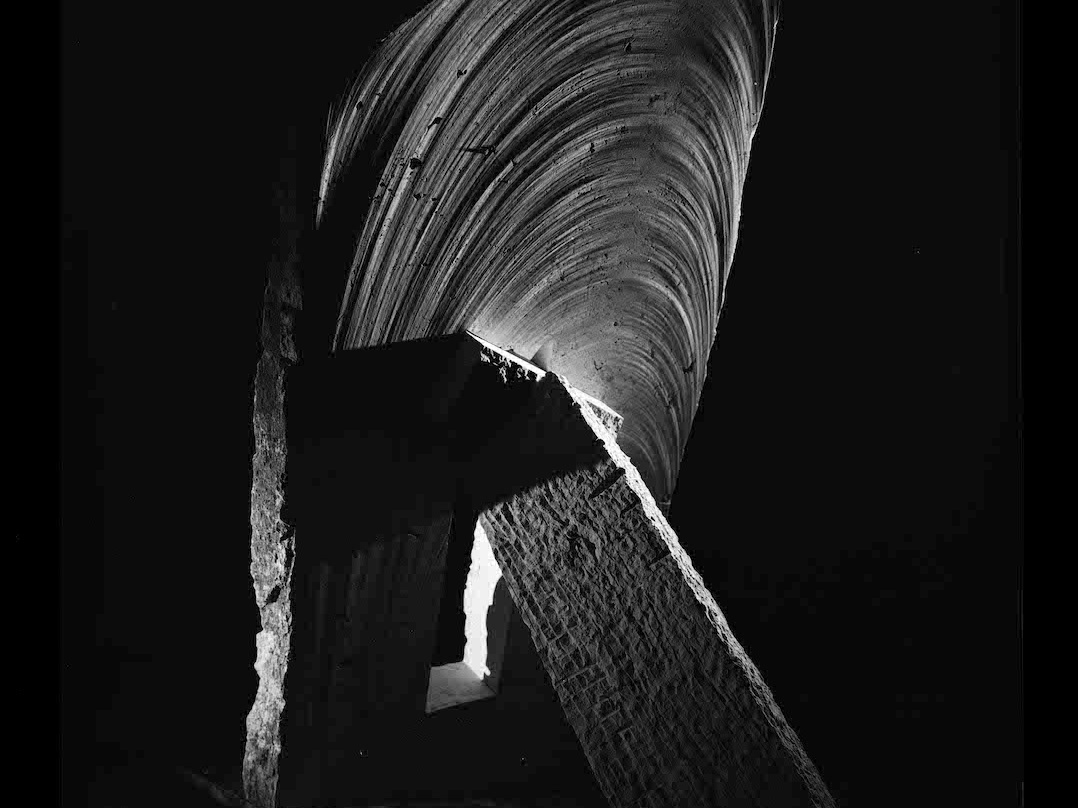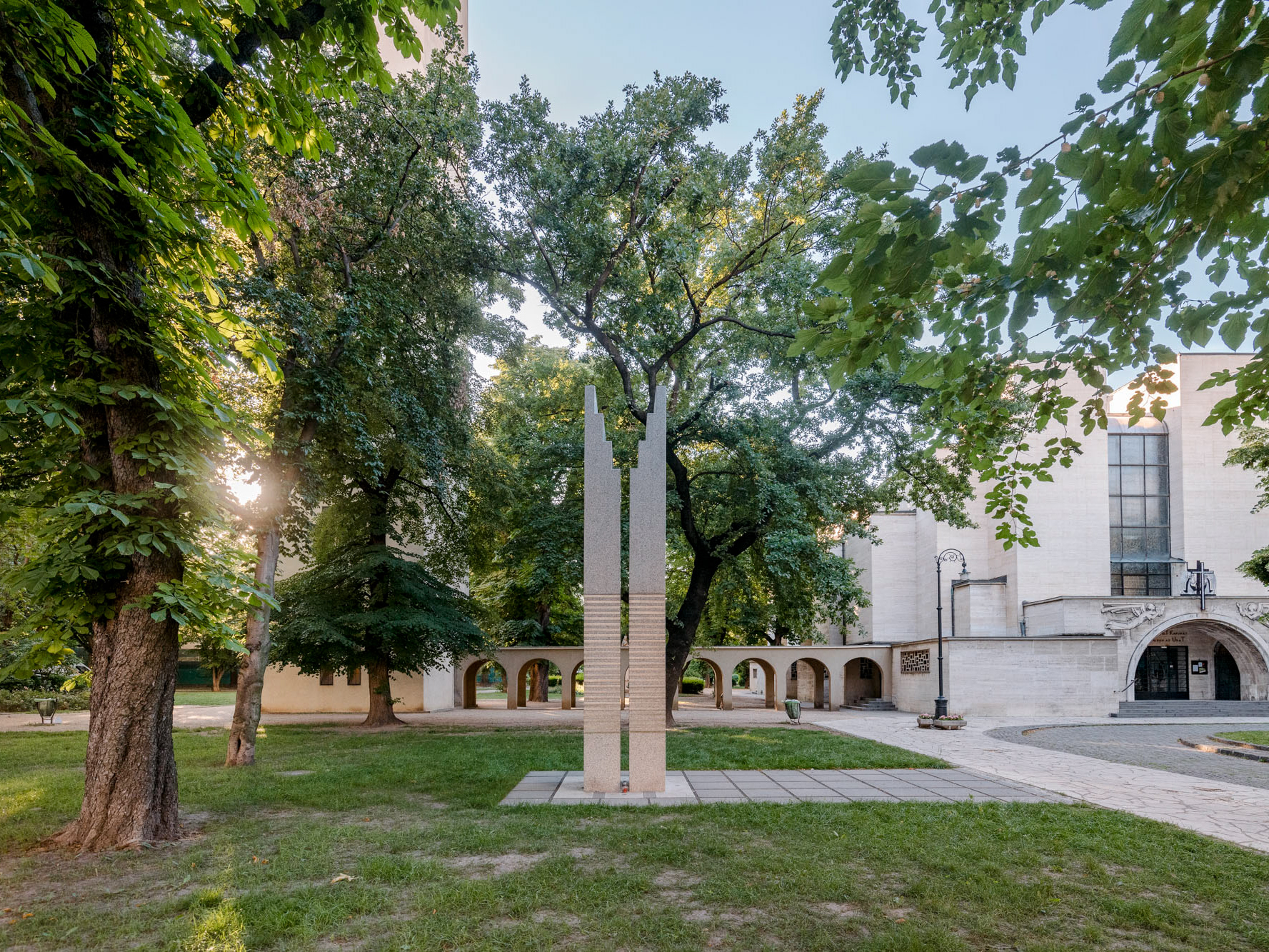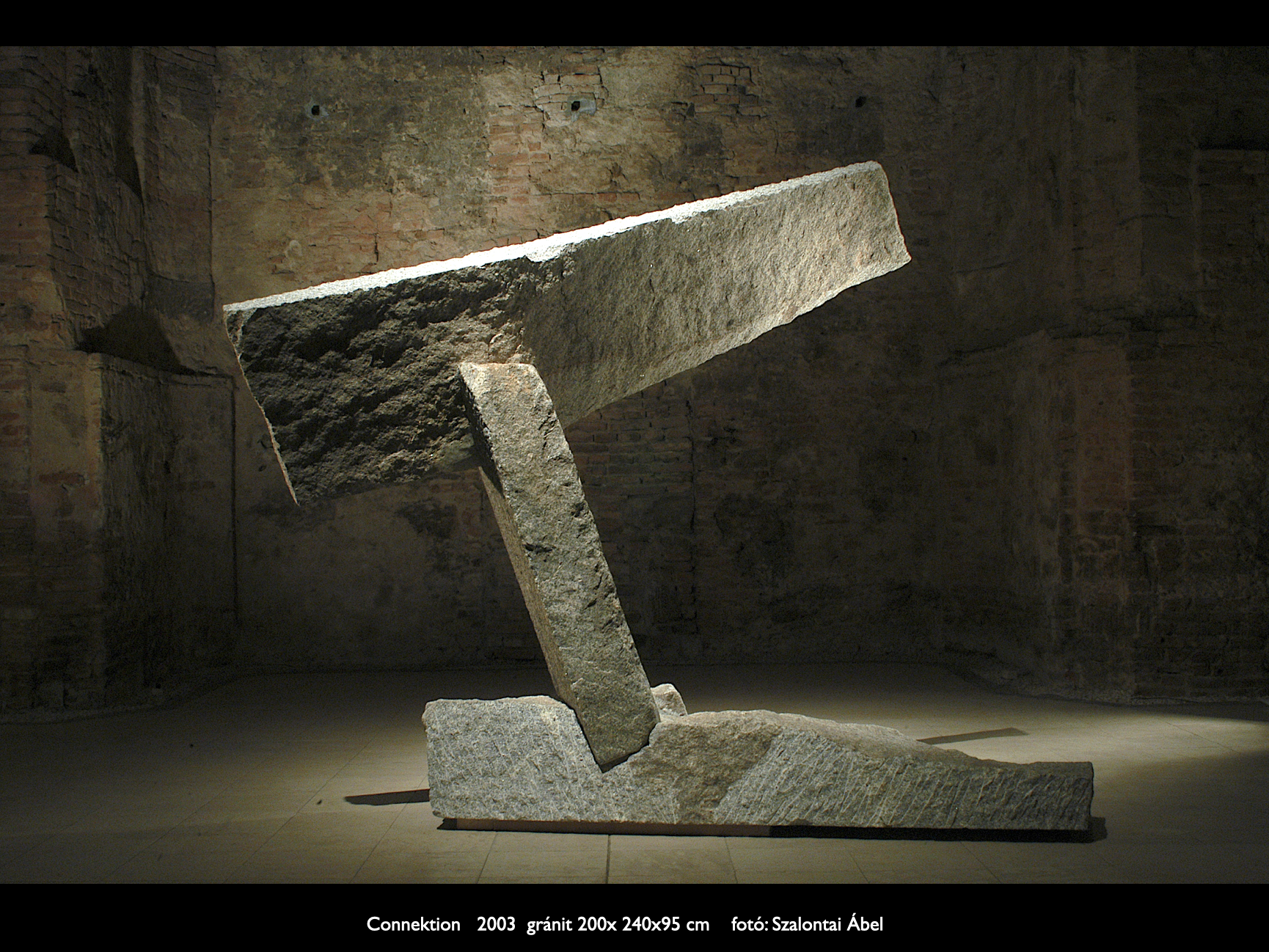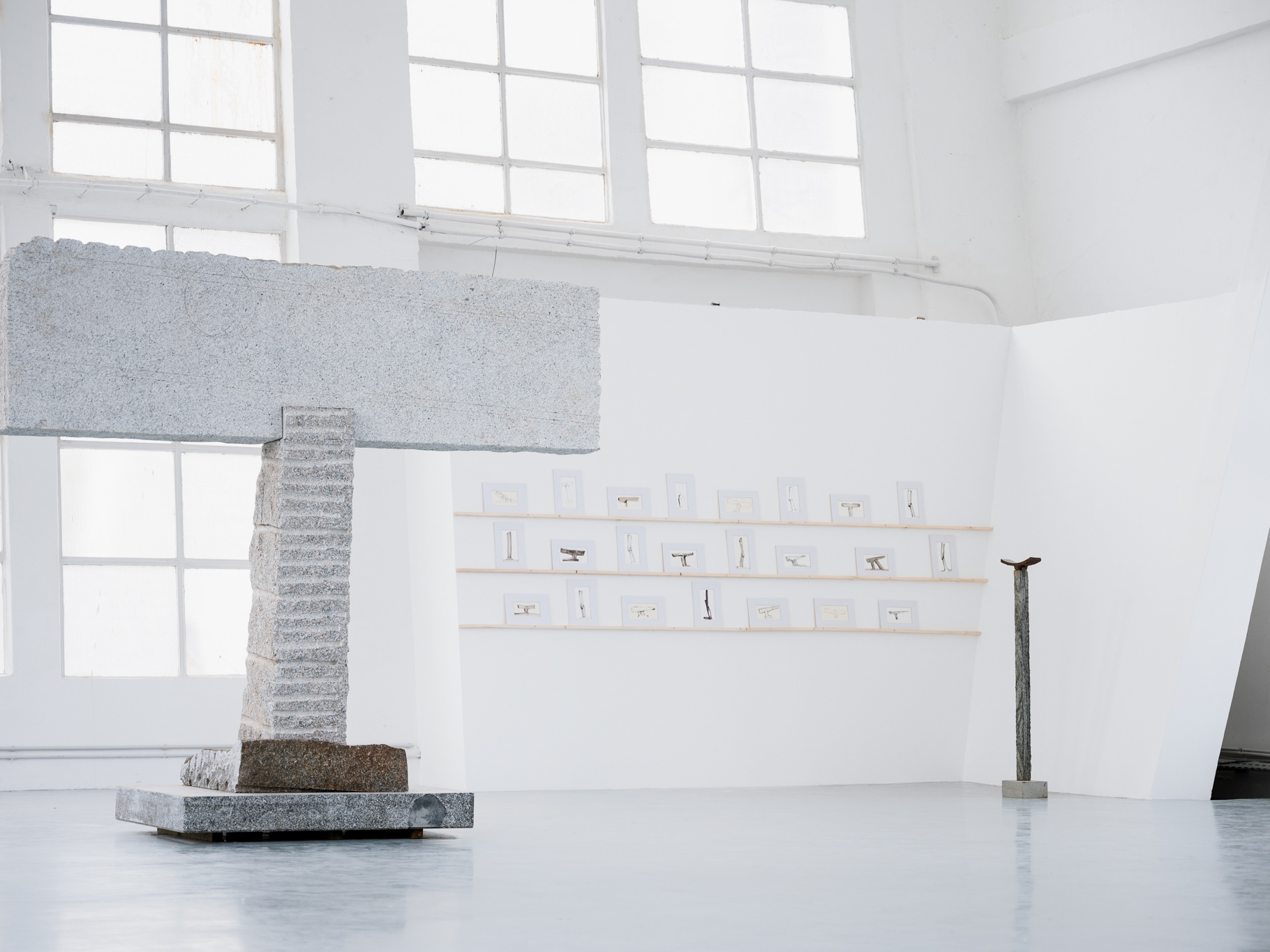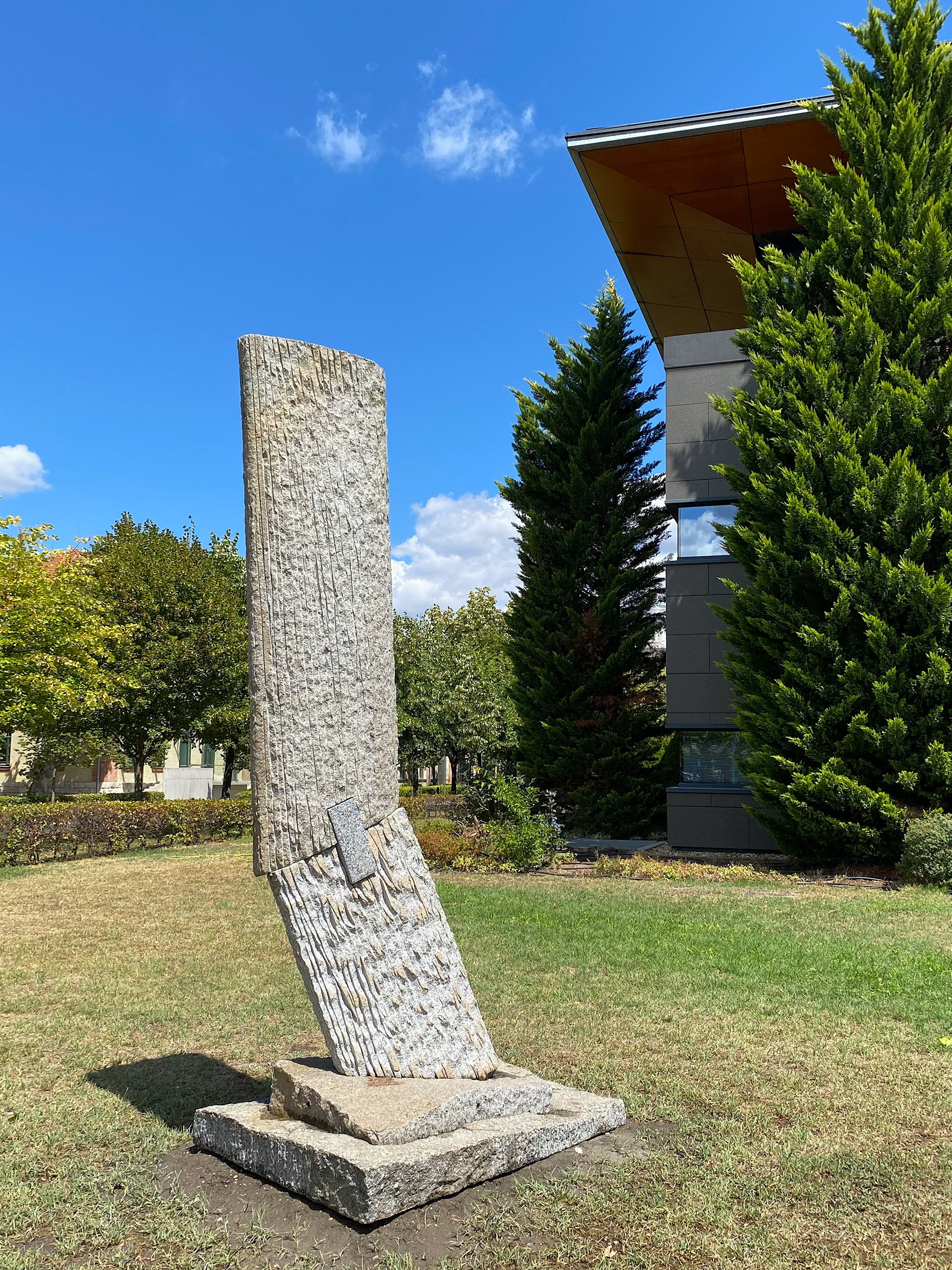


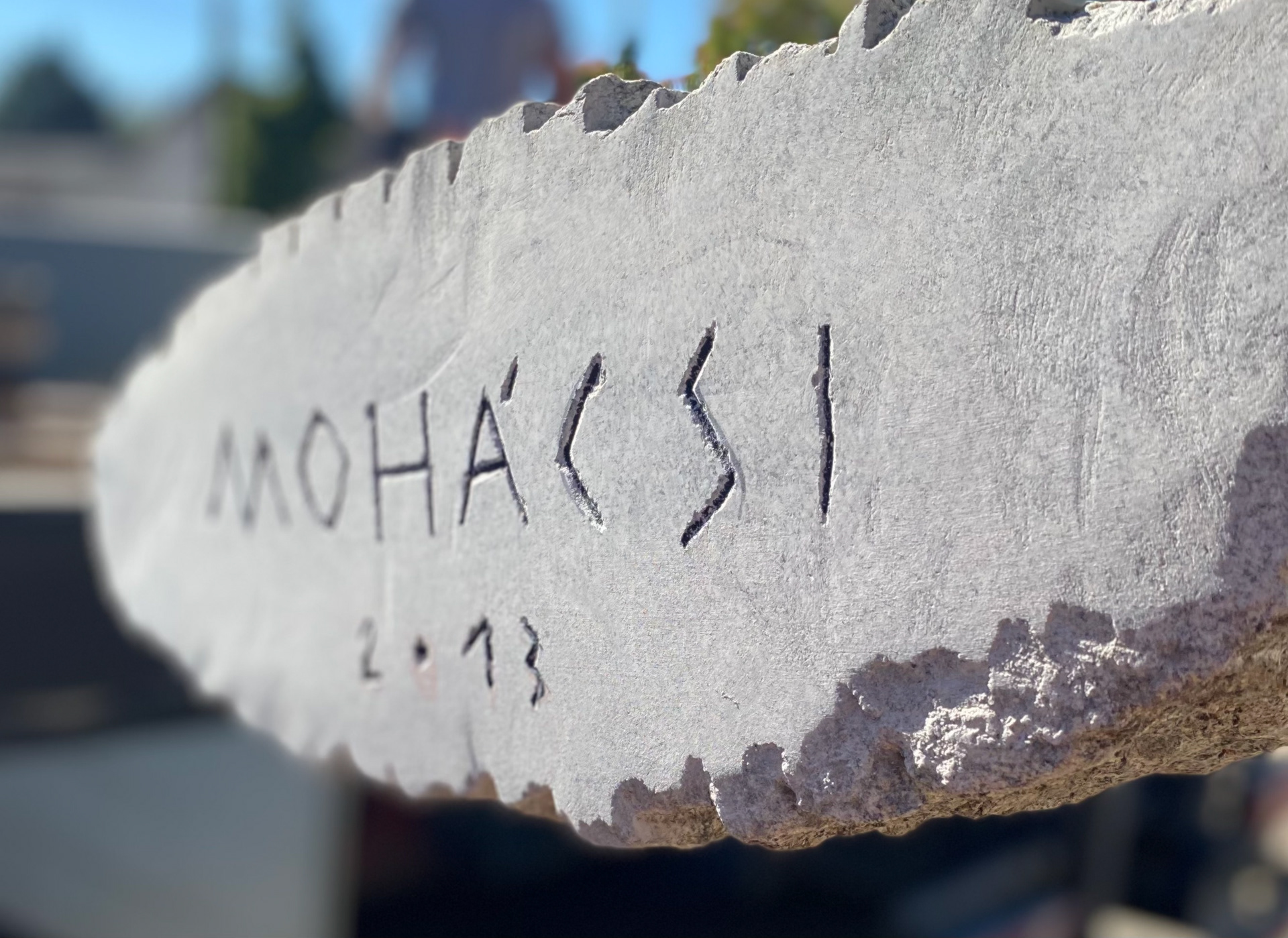
Walking Stone 2017 / Granite, 367 × 150 × 110 cm
photo: Ábel Szalontai
Walking Stone
The stone that the builders rejected has become a cornerstone. Psalm 118:22
Material of the statue
In 1999, I bought two blocks of broken granite from a quarry in Neszmély in northern Hungary.
I spent a long time looking at the blocks in my Budapest workshop, trying to imagine what possible composition I could make from the stones with already carved surfaces.
During the early days of the sculpture's carving, while walking around Budapest, I discovered something strange: two blocks of stone were two pieces of the former parapet of the Széchenyi Chain Bridge, built in 1839-48.
This discovery helped me to design the sculpture. Preserving a fragment and using the fragments to formulate a new, valid message in the language of sculpture was one of the great challenges for me. I created a new sculpture from discarded fragments. This is perhaps more than a gesture of bravado.
The structure of the sculpture
My sculpture is based on the representation of the architectural joining of stone blocks. In this sculptural principle, the static joining, the stacking and spatial displacement of the stone blocks is based on real static rules.
The sculpture is constructed in a way that is legible to the observer from the outside. This readability, this open acceptance of static principles, is one of the cultural characteristics of the sculpture. The static architecture of the 19th century, with its technologies that showed open structural forms, has had a repercussion on the expressive possibilities of sculpture, and as a result new sculptural paths have opened up in art.
---------------
Walking Stone
A kő amelyet az építők elvetettek, sarokkő lett. Zsoltár 118. 22.[1]
A szobor anyaga
1999-ben vásároltam két törött gránit tömböt az észak-magyarországi Neszmély egy kőfarargó telepén. A budapesti műhelyemben a kőtömböket sokáig nézegettem, és igyekeztem elképzelni, milyen lehetséges kompozíciót tudnék összeállítani a már faragott felületű kövekből. A szobor faragásának kezdeti idején, Budapesten járva, egy különös dolgot fedeztem fel: a két kőtömb az 1839-48 ban épült Széchenyi lánchíd egykori mellvédjének két darabját találtam meg.
Ez a felfedezés segített a szobor kialakításában. Megőrizve megmenteni egy töredéket, és a töredékekből új, érvényes üzenetet megfogalmazni a szobrászat nyelvén, ez volt az egyik nagy kihívás számomra. Eldobott töredékekből alkottam új szobrot.Ez talán több, mint egy felvállat gesztus.
A szobor szerkezete
Szobrászatom kőtömbök architektonikus összeillesztésének megjelenítésére épül. Ebben a szobrászati elvben a statikai összeillesztés, a kőtömbök egymásra helyezése, térbeli elmozdulása valódi statikai szabályokon nyugszik.
A szemlélő számára kívülről is olvasható módon épül fel a szobor. Ez az olvashatóság, a statikai elvek nyílt felvállalása adja a szobor egyik kulturális karakterét. A XIX. sz.-i statikai elvű építészete, a nyílt szerkezeti formákat megmutató technológiák visszahatottak a szobrászat kifejezési lehetőségeire, és ennek nyomán új szobrászati utak nyíltak meg a művészetben.
אֶ֭בֶן מָאֲס֣וּ הַבּוֹנִ֑ים הָ֝יְתָ֗ה לְרֹ֣אשׁ פִּנָּֽה׃,,
A kő amelyet az építők elvetettek, sarokkő lett. Zsoltár 118. 22.
The Stone which the builders refused is become the stone the corner.
Psalm 118:22
